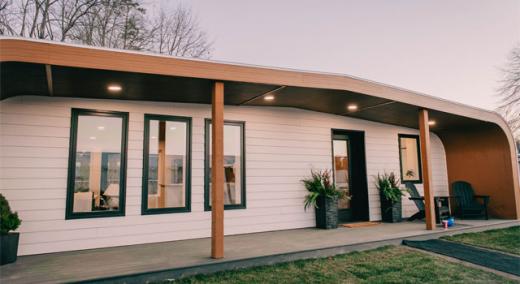On the grounds of the University of Maine’s Advanced Structures and Composites Center sits the nation’s first additively manufactured home made entirely from biobased materials—BioHome3D. The 600 sq ft home, the result of a collaboration between Oak Ridge National Laboratory (ORNL) and the University of Maine, is serving as a testbed to see how well the materials perform over time in the Northeastern climate. If the project’s environmental analysis, weatherization testing, and energy data gathering are favorable, the home could lead to the printing of thousands more like it, providing an energy-efficient and economical housing alternative in the United States.
|
ADVERTISEMENT |
While BioHome3D is more than a thousand miles away from ORNL, the foundational research that led to its completion began at the U.S. Department of Energy’s Manufacturing Demonstration Facility at the lab. The house traces back to a bamboo-based, 3D-printed pavilion showcased in Miami in 2016.
…

Add new comment